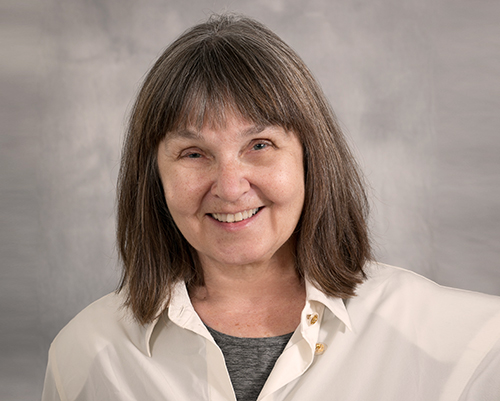 How does spinal cord injury research get paid for? It’s an issue I’ve been trying to understand for the better part of two decades.
How does spinal cord injury research get paid for? It’s an issue I’ve been trying to understand for the better part of two decades.
Fourteen years ago, I went to a conference in Washington, D.C., that was advertised as a gathering of spinal cord injury research scientists and people living in chairs. I was at the conference, called Working2Walk, because I wanted to understand whether there was any chance of healing my husband who had been injured four years earlier — and more importantly, what I could do to help make it happen. It was a heady time. Just a few years earlier a team in Wisconsin had managed to isolate human stem cells for the first time, and the promise of cures seemed real.
One moment that stands out from that weekend is sitting in a breakout room filled with tables that were too low for people in chairs. Those of us who could had moved furniture around so that as many people as possible could squeeze in. Dr. Hans Keirstead had come from California to talk about his research. I remember him: fit, tanned and casual in blue jeans and an open-collared, untucked white shirt, describing his work with cells and mice, and how exactly that work would one day lead to better outcomes for people with spinal cord injuries.
My goal here is not to review what happened with those cells and that science. I want instead to focus on something else Keirstead discussed that day. I wrote it into my journal: “The research can only go as fast as the money comes in.”
This comment was in response to the question on everybody’s mind: If what you’re doing with these mice works, how long until we see it tested in people? How long until it gets to us?
In the years since, hundreds and hundreds of millions of dollars have been spent on the effort to restore function to people living with injuries. Regular readers of this column know that scientists are still testing cell therapies in mice and rats, but also in pigs, dogs and rhesus monkeys. There are even a few trials involving people with injuries, all in the very early stages and with results that range from mixed to promising. In spite of the early excitement over human embryonic stem cells, few if any of the current projects depend on those cells.
Where Research Dollars Come From
Figuring out how to restore function after a cord is damaged is a wildly expensive project, requiring a whole infrastructure of education, tools and peer support. It’s surprisingly hard to put an exact number on what’s getting spent on repairing the cord in the United States, but there are only a few major sources of dollars.
There’s the National Institutes of Health, which gives scientists about $80 million annually, but far from all $80 million ends up funding research. That’s because almost all the scientists applying for that money are working in labs at universities, and the schools that house the labs get a big chunk of the money — known as “indirect cost” — for their general budgets. If a grant of $200,000 is awarded, anywhere from $60,000 to $100,000 never makes it to the lab. What’s more, the amount each university takes varies by school, making it difficult to look at the NIH spending and say for sure what it means in terms of actual research.

Pennsylvania Gov. Tom Wolf speaks with Matthew Rodreick and fellow advocates at the signing ceremony for the Spinal Cord Disability Research Grant Act.
The Department of Defense likewise has an annual doling out of tax dollars for SCI research, but these grants are also subject to the indirect cost process. The nominal DOD annual spending is in the neighborhood of $30 million.
Another major player is the Craig H. Neilsen Foundation, which has granted $168 million since it began funding projects in 2004. It’s complicated, though, to break out how much was spent directly on spinal cord repair. A lot went toward repair, but the portfolio also includes many grants for things like scholarships and efforts to make living with injuries easier.
Finally, there’s another source of funding: states. Funding spinal cord injury research at the state level is doable. It’s effective. It can only happen with the involvement of local people who have skin in the game — people like us. At the state level, we’re not just tolerated or allowed to sit in and offer an opinion; we’re necessary. And our input as to what projects go forward can be built into the system in meaningful ways.
Research is Not a Zero-Sum Game
The success of advocates in Minnesota proves the viability of this approach. The Minnesota story started in 2011 when Matthew Rodreick — father of Gabe, then a teenager and C5-6 quad — decided to try to get his state to spend money on research. That year, he helped found Get Up Stand Up to Cure Paralysis to advocate for funding, made contact with an interested legislator and thought he was on his way. Nope. He quickly learned that there was an already-established group with secured money for traumatic brain injury research, and this group was not prepared to share in what it saw as a zero-sum-game. It heard about his plans, got to the legislator and blocked the money. (Disclosure: The author cohosts a podcast with Matthew Rodreick that is published by GUSU.)
In 2012, he went back and succeeded in getting a hearing at the committee that would have to approve funding. This time, a member of the community arrived in a chair. The man had been paralyzed for 50 years and had a C5-6 injury, just like Gabe. From his wheelchair, the man told the committee that they shouldn’t spend precious dollars on research that was going nowhere and called out Rodreick to his face as a father who needed to work out his grief some other way. The committee dropped the potential bill.
Rodreick called the man and asked for a meeting. Over the next few months they spoke several times at coffeeshops. This man had been a vocal and effective advocate for disability accommodations. To his mind, Rodreick’s research project was pie in the sky that would actually hurt people. It was a zero-sum-game, remember, and Rodreick was trying to take money away from much-needed projects.
Rodreick told the man about some of the recent scientific progress, which, not surprisingly, the man had not heard about. And then Rodreick asked, “Are you really telling me that if you didn’t have to cath anymore, or we could get rid of your nerve pain, or your spasticity, that wouldn’t be worth it? Wouldn’t you do that?”
The man softened to the idea. In his mind, he’d been insisting for most of his life that his community accept him as he was and accommodate him accordingly. But Rodreick was pointing out that supporting realistic research was just another way to take that approach. The scientific community was just another group that needed to be called to account when it came to doing research meaningful to people in chairs.
Rodreick and his partners got the money that year, but more than that, they got the right to sit on the panel that read and approved grant applications. One of the first things they funded was Dr. David Darrow’s epidural stimulation project, which I described in a column last year (“The Promise of Epidural Stimulation,” April 2018). It was a fairly spectacular success, and it only happened because a few interested people from Minnesota decided to not give up.
Minnesota is a cool place, but it’s not magic. Since its legislature approved funding for SCI research, legislatures in Pennsylvania and Ohio have followed suit. There’s also a bill under consideration in Wisconsin right now. All these state efforts have benefited from working with Rodreick; they’ve also enjoyed interest and support from members of United Spinal chapters. What matters most to me is knowing that every dime of that money will be spent as directed and approved by people in our community. We’re not crammed into a meeting room in D.C. waiting for a famous scientist to tease us with stories of cells and mice.
We’re at the table, pushing for progress.
** This post was originally published on http://www.newmobility.com/2019/10/research-matters/

